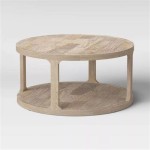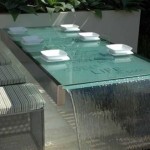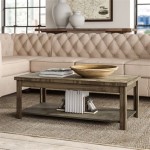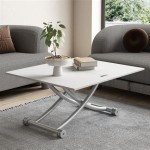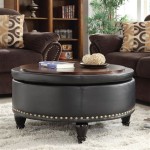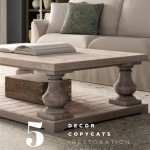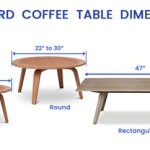The Enduring Appeal of the Glass and Steel Coffee Table
The glass and steel coffee table occupies a significant position in modern furniture design, blending functionality with aesthetic appeal. Its popularity stems from its ability to complement various interior design styles, offering a sleek and contemporary touch to living spaces. Understanding the components, design variations, and maintenance requirements of these tables allows consumers to make informed purchasing decisions and appreciate their long-term value.
The integration of glass and steel is not merely for aesthetic purposes; it represents a deliberate choice of materials that offers specific advantages. Glass, typically tempered for safety and durability, provides a transparent surface that enhances the perception of space. This transparency allows light to filter through, contributing to a brighter and more open atmosphere. Steel, known for its strength and resistance to corrosion, forms the structural frame, ensuring stability and longevity. The combination of these seemingly disparate materials creates a harmonious balance of visual lightness and structural integrity.
The evolution of the glass and steel coffee table reflects broader trends in furniture design, moving from purely functional pieces to objects of artistic expression. Early designs often prioritized practicality, featuring simple geometric shapes and minimal ornamentation. As manufacturing techniques advanced and design sensibilities evolved, more intricate and innovative designs emerged. Today, glass and steel coffee tables are available in a wide array of styles, from minimalistic Scandinavian designs to boldly sculptural statement pieces.
Understanding the Core Components
The two primary components of a glass and steel coffee table are, naturally, the glass tabletop and the steel frame. The quality of these materials significantly impacts the overall durability and appearance of the table.
The glass used in these tables is almost invariably tempered glass. Tempered glass undergoes a heat treatment process that significantly increases its strength and shatter resistance. Unlike standard glass, which breaks into sharp and dangerous shards, tempered glass shatters into small, relatively harmless pieces. This safety feature is paramount, especially in households with children or pets. The thickness of the glass is also a crucial factor; thicker glass is inherently more durable and less prone to scratching or chipping. Common thicknesses range from 8mm to 12mm, with thicker options providing greater stability and resilience.
The steel frame provides the structural support for the glass tabletop. Stainless steel is a popular choice due to its resistance to rust and corrosion, making it suitable for a variety of environments. The finish applied to the steel frame also contributes to the table's overall aesthetic and durability. Powder coating is a common finishing technique that involves applying a dry powder electrostatically to the steel surface and then curing it under heat. This creates a durable, scratch-resistant finish that is available in a wide range of colors. Chrome plating is another option, offering a highly polished, reflective surface. However, chrome plating can be more susceptible to scratches and corrosion compared to powder coating.
Beyond the primary materials, other components may include leveling feet, which are adjustable feet that allow the table to be leveled on uneven surfaces. These are particularly useful in older homes where floors may not be perfectly level. Rubber or plastic bumpers are often installed between the glass and the steel frame to prevent the glass from directly contacting the metal, reducing the risk of scratching or chipping.
Exploring Design Variations and Styles
Glass and steel coffee tables exhibit a remarkable diversity in design, catering to a wide range of aesthetic preferences and functional requirements. The shape of the tabletop is a fundamental design element, influencing the overall look and feel of the table. Rectangular tables are a classic choice, offering ample surface area and a versatile silhouette that complements various room layouts. Round tables promote a sense of fluidity and can be particularly well-suited for smaller spaces. Oval tables provide a softer, more organic shape compared to rectangular tables, while square tables offer a contemporary and geometric aesthetic. The choice of tabletop shape depends largely on the room's dimensions and the desired visual effect.
The design of the steel frame plays a crucial role in defining the table's style. Minimalist designs often feature simple, geometric frames with clean lines and a focus on functionality. These tables typically employ a minimal amount of steel, creating a light and airy appearance. Mid-century modern designs may incorporate splayed legs or tapered frames, reflecting the design sensibilities of the 1950s and 1960s. Industrial-style tables often feature exposed steel frames with a raw or distressed finish, emphasizing the material's inherent strength and durability. These tables may incorporate elements such as rivets or brackets, further enhancing their industrial aesthetic. More contemporary designs may experiment with unconventional frame shapes, such as curved or interlocking structures, pushing the boundaries of form and function.
The color and finish of the steel frame also impact the overall aesthetic. Black steel frames are a popular choice, offering a sleek and contemporary look that complements a wide range of interior design styles. White steel frames provide a clean and minimalist aesthetic, while silver or chrome frames add a touch of sophistication and elegance. Gold or brass accents can be used to create a more luxurious and glamorous look. The choice of finish depends on the desired level of formality and the overall color palette of the room.
Some glass and steel coffee tables incorporate additional features, such as built-in storage or adjustable height mechanisms. Tables with built-in storage may feature shelves or drawers beneath the tabletop, providing a convenient place to store magazines, books, or remote controls. Adjustable height tables can be raised or lowered to accommodate different needs, such as working on a laptop or enjoying a meal. These features enhance the table's functionality and make it a more versatile addition to the living space.
Maintaining and Caring for Glass and Steel Coffee Tables
Proper maintenance is essential for preserving the beauty and longevity of a glass and steel coffee table. Regular cleaning is crucial for removing dust, fingerprints, and other surface contaminants. The glass tabletop can be cleaned with a standard glass cleaner and a soft, lint-free cloth. Avoid using abrasive cleaners or scouring pads, as these can scratch the glass surface. It is also important to avoid spraying cleaner directly onto the glass, as this can cause streaks or water spots. Instead, spray the cleaner onto the cloth and then wipe the glass surface.
The steel frame can be cleaned with a mild soap and water solution. Avoid using harsh chemicals or abrasive cleaners, as these can damage the finish. For stainless steel frames, a stainless steel cleaner can be used to remove fingerprints and smudges. It is important to dry the steel frame thoroughly after cleaning to prevent water spots or rust. For powder-coated frames, a soft cloth and a mild soap and water solution are typically sufficient for cleaning. Avoid using abrasive cleaners or scouring pads, as these can scratch the powder coating.
Preventing scratches and chips is essential for maintaining the pristine appearance of the glass tabletop. Avoid placing heavy or sharp objects directly on the glass surface. Use coasters or placemats to protect the glass from scratches or stains caused by cups, glasses, or plates. When moving the table, lift it carefully by the frame, rather than dragging it across the floor. Dragging the table can scratch the glass or damage the frame.
Addressing minor scratches and chips promptly can prevent them from worsening. Minor scratches can often be buffed out with a glass polishing compound. Deeper scratches or chips may require professional repair. If the glass tabletop becomes severely damaged, it may need to be replaced entirely. Replacing the glass tabletop is typically a more cost-effective option than replacing the entire table.
Regular inspections can help identify potential problems early on. Check the steel frame for signs of rust or corrosion, particularly in areas that are exposed to moisture. Ensure that the leveling feet are properly adjusted to prevent the table from wobbling. Tighten any loose screws or bolts to maintain the table's stability. By performing regular maintenance and addressing any issues promptly, consumers can ensure that their glass and steel coffee table remains a beautiful and functional piece of furniture for years to come.

Colton Contemporary Stainless Steel And Glass Coffee Table Perfect Home

Contemporary Coffee Table Apollo Tom Faulkner Glass Steel Stainless

Claudette Stainless Steel And Glass Coffee Table Perfect Home

Modern Design Stainless Steel Coffee Table With Black Glass Top Square Made In Com

Harper Contemporary Stainless Steel Clear Glass Lounge Coffee Table Perfect Home

Kennie Steel Framed Glass Coffee Table Lifestyle Home

Atlanta Coffee Table Black Glass With Stainless Steel Legs

Luxury Silver Stainless Steel With Tempered Glass Top Coffee Table Rectangle Made In Com

Modern Stainless Steel Based Leg Black Top Glass Coffee Table Tables Made In Com

Maddox Glass And Metal Coffee Table Decor
